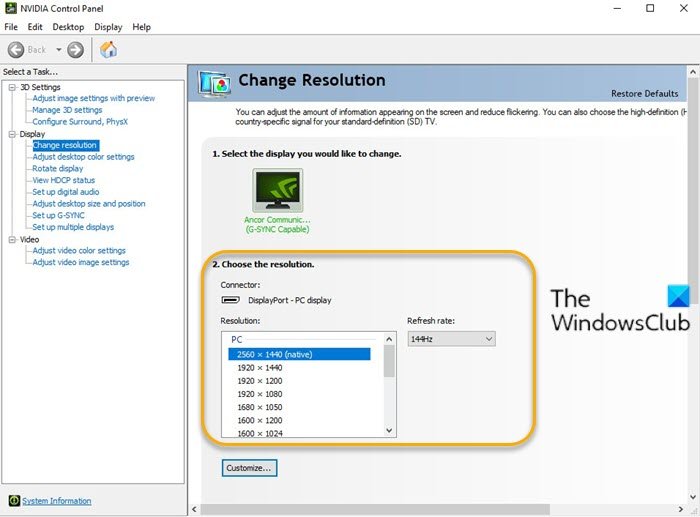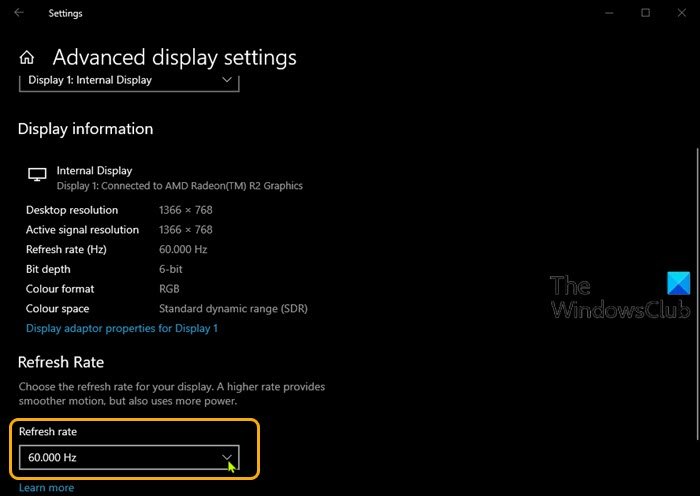If you have purchased a brand new PC gaming monitor and set it up with your Windows device, but you notice that the 144Hz option is not showing in Windows 11/10 Display options, this post is intended to help you. In it, we will detail how you can make this option available.
Before we jump right into it, a bit of background.
The Refresh Rate is the number of times a display refreshes in a second to show a new image. The unit of frequency is measured in Hz (hertz). Therefore, 144Hz means the display refreshes 144 times per second to show a new image, 120Hz means the display refreshes 120 times per second to show a new image, and so on.
Mostly for gamers that have a 60Hz display, which is being used to play a game rendering 75 frames per second, you may have a poor experience due to “screen tearing”. To resolve this, a higher refresh rate is needed from a computer monitor with at least 120Hz. These displays can handle up to 120 frames per second, and the result is much smoother gameplay.
144Hz option not showing in Display options of Windows 11/10
If you are faced with this issue, you can resolve it based on your PC configuration, so we’ll go through both optimizing your settings for NVIDIA and AMD graphic cards.
You’ll also need the right cable. Make sure you have a DisplayPort 1.2 or HDMI 2.0 connection to take advantage of the full-frame rate experience.
Also updating NVIDIA or AMD drivers sometimes resets the monitor settings, so you might want to double-check if that’s the case for you too.
For NVIDIA graphics card

Do the following:
- Open NVIDIA Control Panel. If the NVIDIA Control Panel is missing, see this post.
- Head to Change Resolution tab under the Display options.
- Next to the Resolution window, there’s a Refresh rate drop-down menu. (If you have more than one monitor, you’ll need to select the correct one).
- On the drop-down, you should see the higher frame rate option, assuming you have the right cable.
For AMD graphics card

Do the following:
- Right-click your desktop and choose Display settings.
- On the right pane, scroll down and select Advanced display settings.
- In the properties window, click the Refresh rate chevron.
- From the drop-down, choose your desired mode (e.g. 144hz).
- If you have more than one monitor, you will need to select the other monitor from the Choose display section in the Advanced display settings window and repeat steps.
That’s it!
Why is my 144hz monitor only showing 60hz option?
If your 144Hz monitor only shows a 60Hz option, ensure your graphics card supports 144Hz, and the correct drivers are installed. Also, check that your monitor is connected via a capable cable (like DisplayPort or a high-speed HDMI). Lastly, update the graphics settings in your operating system to enable 144Hz.
How do I enable 144hz on Windows?
To enable 144Hz on Windows, right-click the desktop and select “Display settings.” Click on “Advanced display settings” and choose the monitor. Click “Display adapter properties,” go to the “Monitor” tab, and select 144Hz from the “Screen refresh rate” dropdown. Apply the changes to activate the new refresh rate.